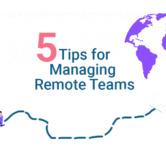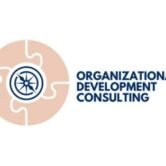HR Isn’t Broken—But Leadership Must Restore Trust

Most workplace dysfunction isn’t about individual employees—it’s about broken systems, unclear expectations or environments that lack trust. And these issues can’t be solved by HR alone.
Every week, I open my inbox to emails with subject lines like “How to handle toxic employees” or “Dealing with energy-sucking coworkers.” Each one leaves me frustrated—not because the issues aren’t real, but because the language alone reveals a bigger problem.
Only 40 percent of leaders reported having high-quality leadership in their organizations in 2023—a sharp 17 percent decline over the previous two years and the largest drop in a decade. At the same time, employees increasingly view HR as a function that serves the company’s interests rather than their own. Together, these trends paint a troubling picture: Workplaces are losing trust, and both HR and leadership are bearing the brunt of the blame.
When leaders focus on “toxic employees,” they’re often looking for someone to blame. What I’ve learned over the years is that most workplace dysfunction isn’t about individual employees—it’s about broken systems, unclear expectations or environments that lack trust. And these issues can’t be solved by HR alone.
HR professionals are stretched thin, caught between supporting people and managing the ever-present risks of compliance. Employees, meanwhile, feel abandoned, believing HR exists more to protect the company than to advocate for them. This dynamic creates a vicious cycle: Leaders blame HR for being unhelpful, employees lose trust in HR and nothing meaningful gets fixed.
But it doesn’t have to be this way. Leaders who build collaborative relationships with HR and managers—not as enforcers but as partners—can create workplaces where trust, accountability and innovation thrive.
The real problem with HR: A culture of blame
Over the years, I’ve noticed a troubling pattern: Leaders often rely on HR to make tough calls, only to turn around and blame HR when things don’t go as planned.
I’ve heard it all: “HR won’t let me do this,” “HR made me terminate that employee,” or “HR’s policies are getting in the way.” In reality, many of these frustrations stem from leaders abdicating responsibility for their own decisions. Rather than stepping up to address challenges directly, they lean on HR to be the enforcer—and then resent HR for it.
HR professionals feel this pressure acutely. Many want to be strategic partners, helping leaders and teams succeed. Instead, they’re often reduced to being the “bad cop,” managing risks and enforcing policies without the support they need to focus on people and culture.
This culture of blame erodes trust across the board. Employees see HR as out of touch. HR feels stuck in a reactive role. And leaders, frustrated with both, lose sight of their own accountability.
Why ‘toxic employees’ aren’t the real issue
When leaders ask me how to deal with “toxic employees,” I always ask them to pause and reflect. Have you considered what might be driving that behavior? Are you creating an environment where people feel supported, heard and empowered to do their best work?
In my experience, what we call “toxic” behavior is actually a symptom of a larger problem. Maybe the employee hasn’t received feedback or training. Maybe they’re responding to unclear expectations or feeling undervalued. Or maybe they’re simply struggling in a role that doesn’t match their strengths.
The idea of toxic employees is widespread. The American Psychological Association found that 19 percent of workers would describe their workplace as toxic. Even more striking, employees in these environments are more than three times as likely to experience harm to their mental health compared to those in healthier workplaces.
This data confirms what I see all too often: What’s perceived as “toxic” behavior usually reflects a toxic environment, not a toxic person. Labeling someone as “toxic” might feel like the easiest solution, but it rarely addresses the root cause. Instead, it perpetuates a blame cycle that keeps teams stuck. True leadership means staying curious, asking the hard questions and committing to fixing systems—not scapegoating individuals.
Leaders as partners: Building collaboration with HR and managers
The good news is that leaders have the power to break this cycle. By fostering stronger collaboration with HR and managers, leaders can create an aligned approach to people strategy—one that restores trust and empowers everyone to succeed. Here are some strategies I’ve seen work:
1. Rebuild trust in HR.
Too many leaders see HR as a roadblock instead of a resource. If you’ve ever assumed your HR team is “making your life harder,” take a moment to check that mindset. Go have a real conversation. Ask questions. Get to know their perspective. At its best, HR is a partner that can help you navigate tough decisions and think strategically about your team’s needs. But trust starts with leaders taking the initiative to build those relationships.
2. Empower managers as leaders.
Managers are the first line of defense when it comes to workplace culture. Yet, they’re often underprepared to handle challenges effectively. Leaders need to invest in manager training and development —not just on processes, but on emotional intelligence, communication and conflict resolution.
For example, at a large trucking and logistics company I work with, HR serves as a coach and advisor to managers. When a manager faces a tough decision—like whether to let an employee go—HR doesn’t take over. Instead, they facilitate a deeper conversation: What’s the root cause of the issue? What’s the best outcome for everyone involved? Ultimately, the manager owns the decision, with HR providing guidance along the way. This approach not only builds managers’ confidence, but also reinforces their accountability.
3. Break down silos.
Leaders, managers and HR often operate in silos, which leads to misaligned goals and conflicting priorities. To fix this, I recommend creating opportunities for cross-functional collaboration. Invite HR to spend time in other departments and encourage leaders to share challenges openly. Encourage your team to learn more about HR’s role. The more connected these groups are, the more proactive and aligned your people strategy will become.
A new mindset for leadership
If you want to restore trust in your organization, start by looking inward. Ask yourself: Am I assuming the worst about HR? Am I taking responsibility for my team’s culture, or am I looking for someone to blame?
Leadership isn’t about having all the answers. It’s about staying curious, building connections and facilitating an environment where everyone feels supported to do their best work. When leaders, HR and managers work together as partners, the possibilities are endless.
Frustrations with HR may be real, but they’re not the end of the story. By stepping up as leaders, we can create workplaces where trust and collaboration thrive—together.










